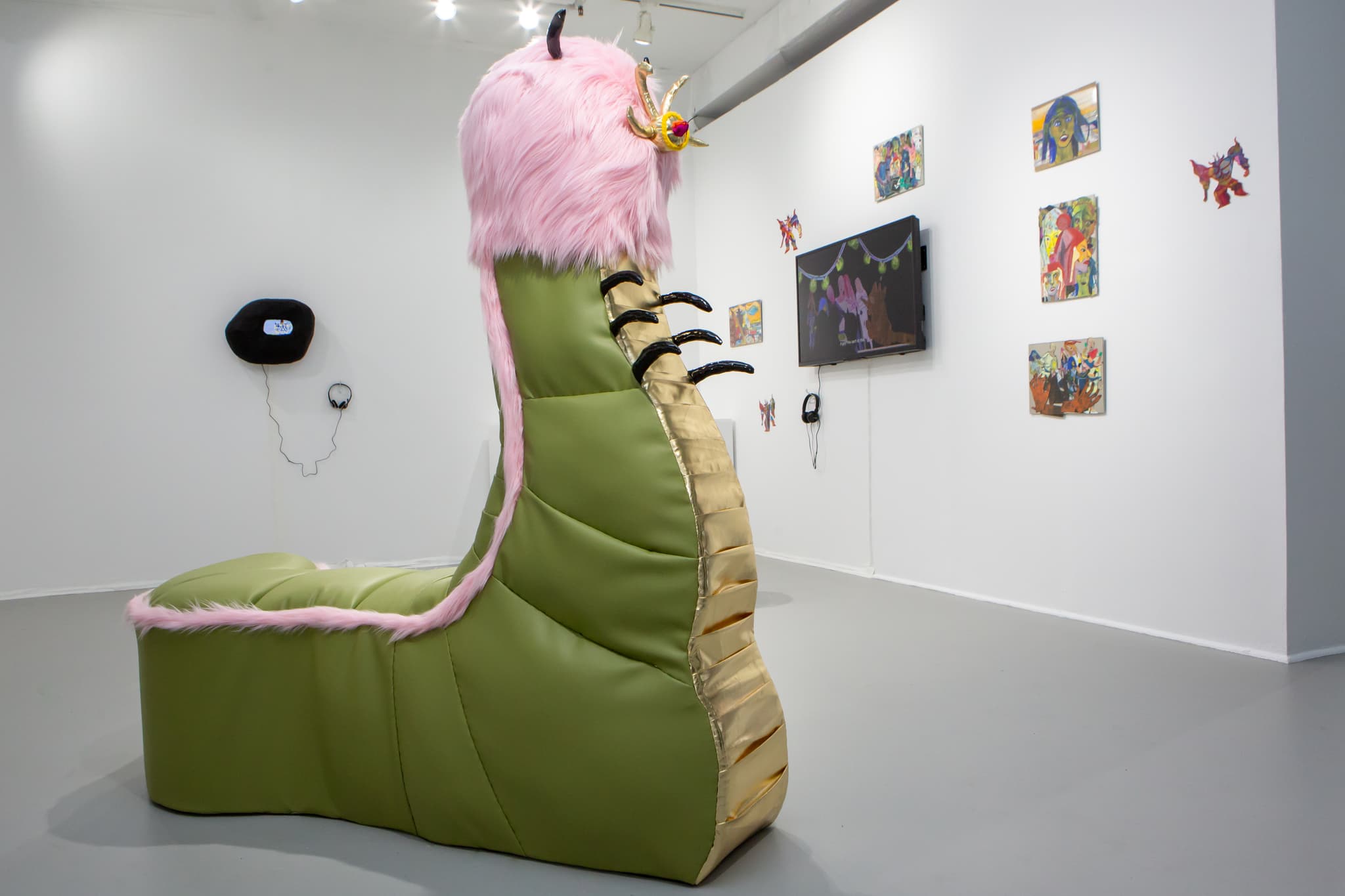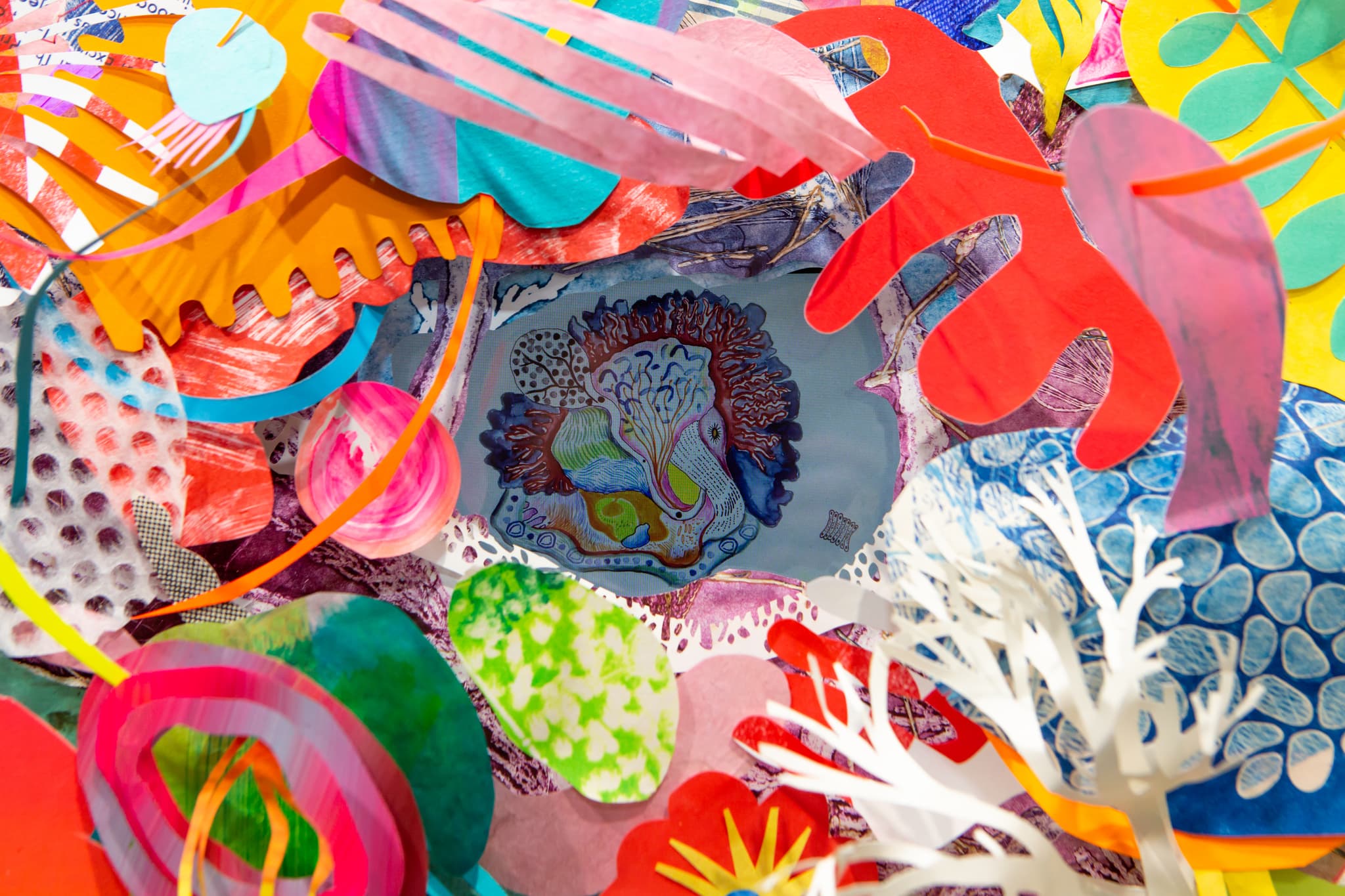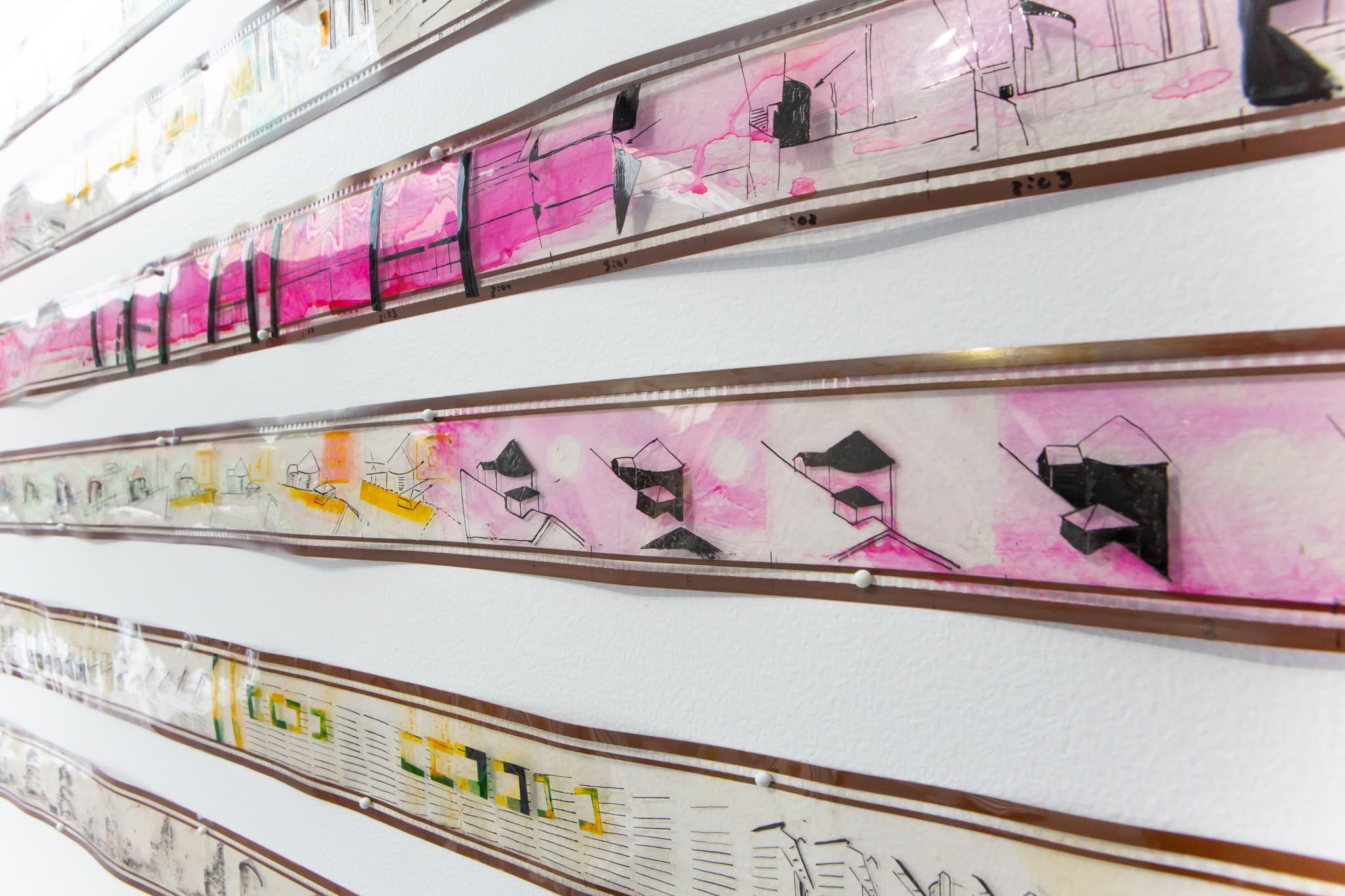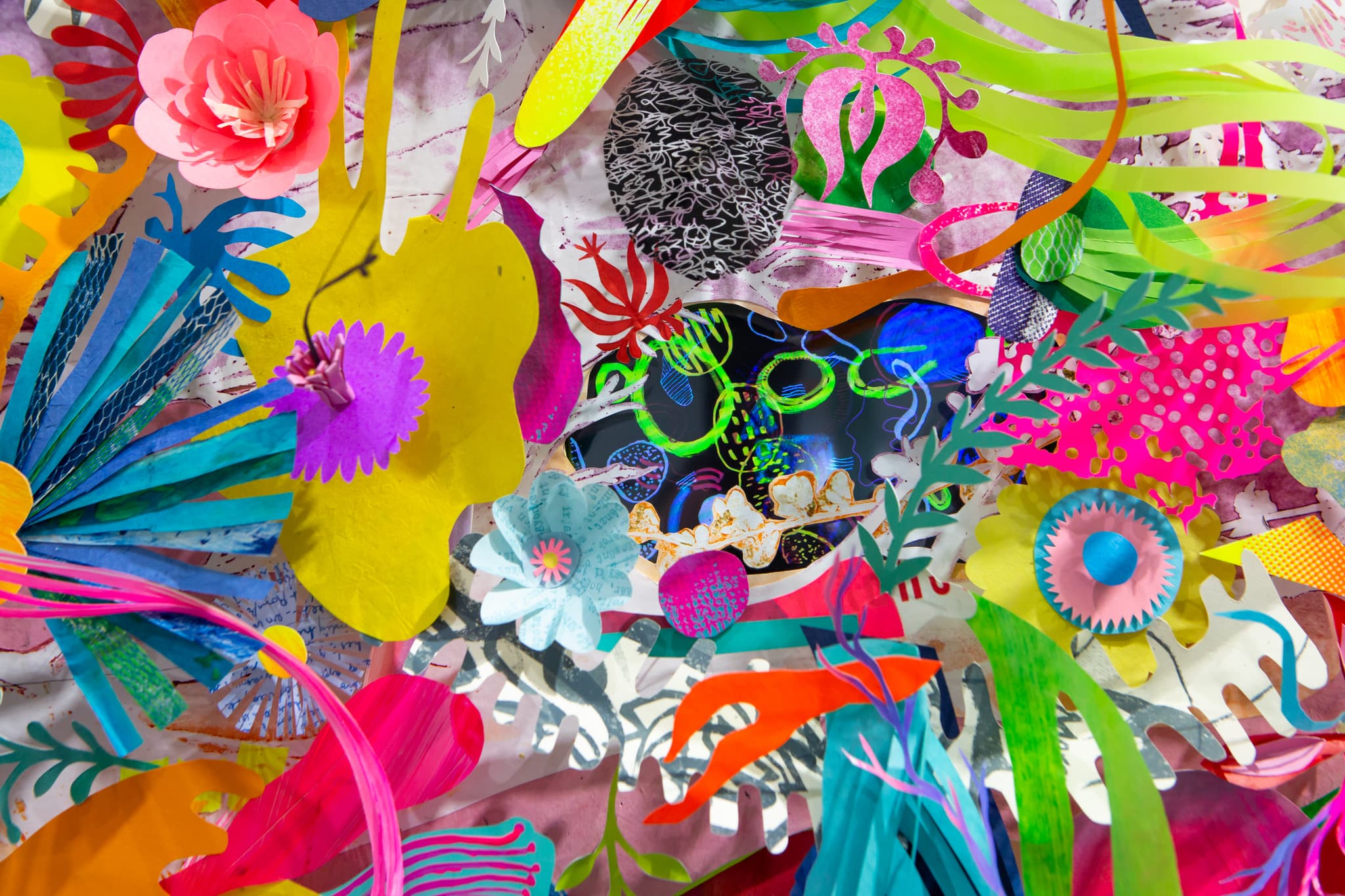Animation is everywhere, from family-friendly movies and edgy TV shows to the GIF on your group chat. But many of us aren’t so familiar with animation as a medium for fine art.
“It’s just not something that the general public gets to see very often,” says Boston-based animator and director Maya Erdelyi. “Everyone knows Pixar and Disney, but people don’t know these experimental animators that are cranking out really interesting and innovative pieces in the way that a painter is making a painting.”
Erdelyi set out to showcase precisely that sort of work for her first major curatorial project, The Skin Has Eyes: Animated Visions, an exhibit on view from February 23 through April 28 at the Mills Gallery at the Boston Center for the Arts. And she introduces students to the wonders of the medium as an instructor at Lesley University and the School of the Museum of Fine Arts at Tufts. Many are younger than Erdelyi was when she took her first class on animation at age twenty-five. But she was drawn to art long before then.
“I’ve been drawing since I could hold a pencil,” Erdelyi says. “I think the first time I got in trouble with my parents was because I was hiding a pencil under my pillow and drawing on the walls.”
Eventually her portfolio scored her a spot at LaGuardia High School, the New York visual and performing arts school made famous by the movie Fame. She went on to earn a fine arts degree at Cooper Union, studying everything from oil painting to printmaking to sculpture. But it wasn’t until she entered a master’s program in arts education at Harvard that she took a class taught by award-winning animator Ruth Lingford—and made her first foray into a medium that’s fascinated her ever since. “It just kind of changed my life. I became obsessed,” Erdelyi says. “Animation is kind of a funny medium in that it’s so time-consuming and tedious, but it’s also so magical.”

Center: Tarakhan (Alexandra Borovski and Tyler Giordano), Cappy, 2019. Left: Ashley Wick, We are having a personal experience, 2015. Right: Laura Harrison, Little Red Giant, the Monster That I Was, 2017 and related works on paper. Installation view, The Skin Has Eyes, Mills Gallery, Boston Center for the Arts, 2019. Photo by Melissa Blackall.
That dichotomy of painstaking labor and breathtaking visuals is on full display in The Skin Has Eyes: Animated Visions, which features works by both fine artists who incorporate animation in their practice and animators who create physical objects as part of their process. Take MassArt instructor Jake Fried’s Brain Wave (2019), a minute-long video that took seven months to make as he reworked the same ink and Wite-Out drawing 1,440 times. Or consider Hayley Morris’s The Ecstatics (2016), a stunning stop-motion music video she created for the band Explosions in the Sky. It’s paired with a behind-the-scenes look at the Providence studio where she conjured its paper universe, one stroke of her utility knife at a time. This too is a stop-motion video, assembled frame by frame, and props she created for the project are also on display.
Several of the exhibit’s thirteen artists and art collectives share both process and final product in this way, showing film strips or individual cells alongside the resulting animations. Other artists present work without any screens at all. Putting a modern spin on zoetrope, Eric Dyer’s strobe-lit sculpture Eadweard’s Menagerie (2017) recontextualizes nineteenth-century photographer Eadweard Muybridge’s sequences of nude women cavorting for the camera, setting them in motion under the gaze of a giant nude Muybridge. From afar, Amy Lee Ketchum’s Polaroids (2016–2018) appears to be a grid of one hundred snapshots, but closer inspection reveals the impromptu still-lifes and candid portraits to be anything but instant: each is a memory carved from cardboard, a material she uses in animation. And Alexandra Borovski and Tyler Giordano created sculptural furniture—including Cappy (2019), a giant cartoony caterpillar in vinyl and faux fur—that visitors can lounge on while viewing the films.

Maya Erdelyi, Ma Femme Maison, installation view, 2019. Photo courtesy of the artist.

Gina Kamentsky, footage from the film Silo, 2017. Installation view, The Skin Has Eyes, Mills Gallery, Boston Center for the Arts, 2019. Photo by Melissa Blackall.
The range of work speaks to the expansive possibilities of the form, possibilities Erdelyi embraces in her own practice. “There’s a lot of freedom in animation,” she says. “You’re not really constrained by gravity or conventional storytelling or even a particular medium. If I was doing metal sculpture, I would just be doing metal sculpture. But animation allows me to explore different whims.”
That eclectic approach is evident in Erdelyi’s two pieces in the exhibit. In the back room, an hour-and-a-half loop of short films sourced from an international roster of creators includes her 2012 work Pareidolia, whose title refers to the human tendency to perceive meaningful patterns in random stimuli. The film draws connections between Erdelyi’s memories of witnessing public cremations in India and a haunting family history: her great-grandmother Margit’s survival of a mass killing in 1944, when Nazis forced her and fourteen other hostages to lie facedown in the snow on the banks of the Danube. Margit was the only one to walk away. Erdelyi brings her story to life by mixing memory and history and her own imaginings, using her alchemical medium to allow impossible things to happen and a kind of dream logic to take hold. Margit, rising from blood-stained snow, walks from a black-and-white winter into a Technicolor town; later, she wanders from the Danube to the Ganges, passing a woman who washes clothes in the river as a corpse burns nearby. Physical and psychic landscapes blur with the help of cut-paper puppets, stop-motion sets, hand-drawn animation, and other techniques that lend the film depth and texture that do feel downright magical in an age of CGI.
“I’ve been trying to keep away from purely digital work,” Erdelyi notes. “Partly I think it’s just because I have this background with craft and working with my hands and touching things, so I consider the work I’m doing a hybrid animation process. It’s analog and digital combined.” That’s also true of her second work in the exhibit, a new wall piece called Ma Femme Maison (2019) that presents two exuberant collages connected by a hot-pink umbilical cord. These riotous forms arise from found papers and monoprint scraps that have been carefully cut like lace, bored with holes like Swiss cheese, or fashioned into orbs, organs, feathers, and flowers. Most of the colors are neon-bright hues hard to find in nature, but the shapes are organic, by turns botanical, aquatic, anatomical, cosmic. Each wild yet delicate assemblage surrounds a small LED screen that plays looping animations inspired by nineteenth-century drawings of developing embryos.

Maya ErdelyiI, Ma Femme Maison, installation view, 2019. Photo by Melissa Blackall.
Erdelyi, whose first child is due this summer, says the work was inspired by her pregnancy. “It’s kind of an homage to the Louise Bourgeois series called Femme Maison where she did these female bodies with houses on their heads,” she explains. “I feel like I’ve just been thinking a lot about motherhood and even the notion of ‘housewife’—how ‘house’ and the feminine are often paired together. And is the body a house? And what does it mean that I’m housing someone right now in a way?”
Maternal themes are also central to Erdelyi’s other major project of the moment. She’s currently finishing an animated film titled Anyuka, which means “mother” in Hungarian. “My grandmother was Hungarian, and everyone around me called her Anyuka,” Erdelyi says. “She was basically a mother to a lot of people.”
Erdelyi’s grandmother died the month before she moved to Boston in 2014. She soon found herself loading reels of her grandmother’s old Super 8 films into the Museum School’s projector on her days off from teaching. “I would come in and just sit in a dark room and watch these films,” she recalls. “I was recording them just for posterity, for other family members, and I got kind of overwhelmed by the beauty of the film.”
Frames from those films have worked their way into Anyuka, which also draws on letters Erdelyi’s grandmother left behind. “She kept meticulous documentation of the process of becoming an American citizen. Her story is sort of the American dream story, but from the perspective of a refugee and an immigrant,” Erdelyi explains. “It’s kind of an investigation into family history and memory and also just an homage to someone who was important to me.”

Animation process shot, 2018, image courtesy of Maya Erdelyi.
Erdelyi began the project a few years ago, and it’s taken on even more resonance recently. “I think it’s sort of interesting too because the movie is called Mother, and now I’m about to become a mother. There’s some kind of beautiful cycle happening in there.” She hopes to have the film finished by July. “Partly it’s just nice to have a goal post,” Erdelyi says, adding with a laugh, “but also I hear it’s difficult to get any kind of work done when you have a newborn.”
In the future, she also hopes to experiment with new modes of expression. “I am interested in bringing animation into different realms, so maybe making wallpaper that’s actually also animation, and clothing that’s inspired by animation frames,” Erdelyi says. She attended the opening of The Skin Has Eyes in a dress whose print was based on drawings she made while listening to live music, translating sound waves into marks on paper—one more illustration of a mind in motion and a practice that can’t be pinned down.

Maya Erdelyi, Portrait by Simran Gvalani for Boston Art Review.
The Skin Has Eyes: Animated Visions is on view at the Mills Gallery, Boston Center for the Arts, 551 Tremont St., through April 28. 617-426-5000, www.bcaonline.org
Jacqueline Houton is an editor and writer based in Cambridge. Currently a copyeditor at a children’s and YA publisher, she is a former editor of The Improper Bostonian and former managing editor of The Phoenix and STUFF magazine. Her writing has appeared in Boston magazine, DigBoston, Bitch magazine, Big Red & Shiny, and other publications.







